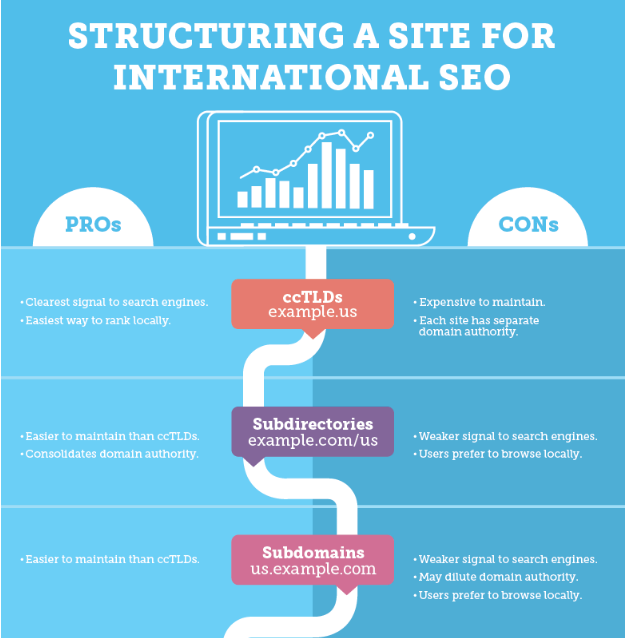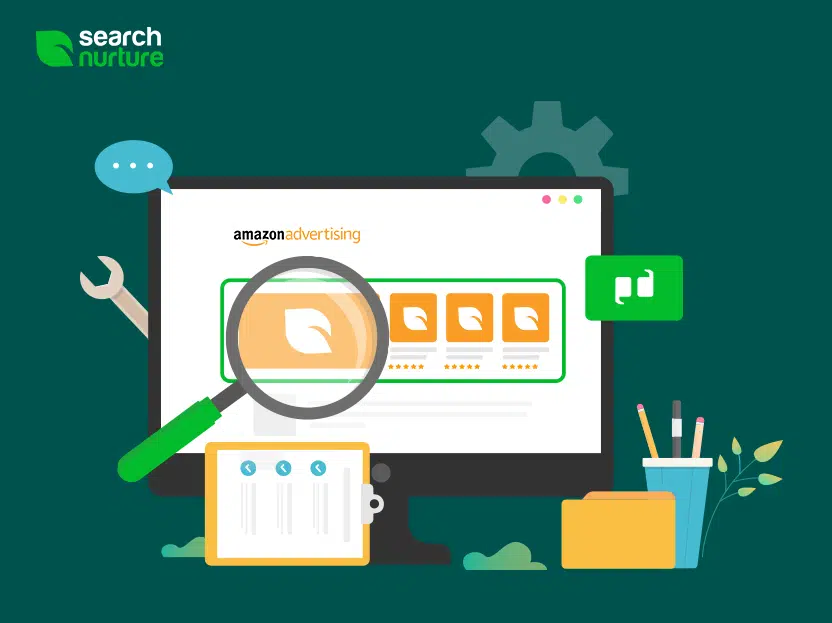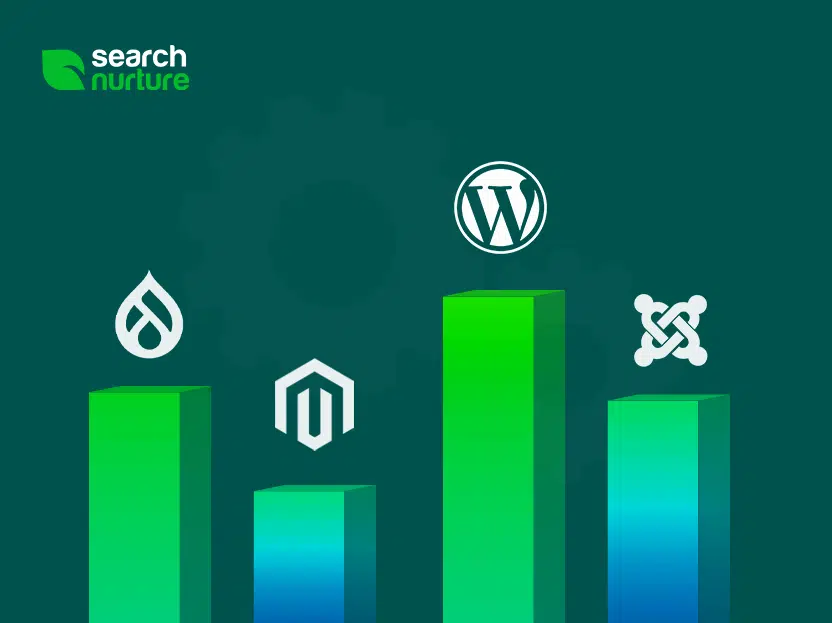What Exactly is International SEO?
International SEO is a specialized form of search engine optimization (SEO) that helps companies target and rank in multiple global markets. It’s an essential part of any successful digital marketing strategy, enabling companies to tap into new markets by boosting visibility on global search engines and increasing their potential customer base.
International SEO also yields benefits such as improved website performance, better targeting opportunities for localized content, higher conversion rates, and more effective marketing campaigns. With all this in mind, let’s take a closer look at how you can use international SEO to successfully expand your online presence across different countries.
Why Is International SEO Important?
International SEO is important because it allows companies to improve their website rankings in different countries, thus increasing their visibility and reach exponentially. By targeting global markets, companies can maximize their traffic outside of their main target country to tap into a new customer pool. While local SEO is important, if you want to truly scale and grow your business, you need to extend your reach to potential customers around the world. An international SEO strategy is key for building trust and credibility with international customers, which will help you improve conversions and ROI on global campaigns.
Translating your current website into different languages isn’t enough to make your website and content appealing to a global audience. A tailored strategy based on the location you’re trying to target is essential to identify what international SEO strategies you’ll need to implement to rank in those areas. This includes evaluating traffic potential and analyzing international competitors and audience behavior.
Benefits of International SEO
Reach other markets more efficiently
Most companies focus on local SEO first to target potential customers in their local area. But when you’re ready to scale, international SEO can help you reach new customers in other countries. It’s incredibly useful to target specific countries and regions with customized content based on the locations unique user preferences. This way, you can optimize your marketing efforts, making the expansion process smoother and more effective.
Deliver optimized and relevant content to broader audiences
International SEO helps companies understand and meet customer needs based on their location or region. Content that is relevant to a customer in your local area may not resonate with a customer from another country, so a custom SEO strategy is needed. Using international SEO you can ensure that optimized content is delivered precisely to the people it’s been created for so you can appeal to a wider audience.
Increase global awareness
Regardless of their location, you want your target customer to be able to find you. And you need to make it easy for them. International SEO can help increase global awareness by improving your international search engine rankings. This will make finding and connecting with your company effortless, no matter what country your customer lives in.
Increase international sales
More customers mean more sales, and getting your company visible on the international market means more opportunities for conversions. Implementing international SEO enables businesses to expand internationally and target different global markets. Additionally, international SEO can help build trust with customers in different countries by making sure they are seeing specific content that is tailored to them.
International SEO Best Practices
Get the technical foundation right
Before getting started with content-based SEO it’s important to plan out your technical approach. This will ensure that the foundations are established from the beginning, which will set you up for success with the rest of your SEO strategy.

Choosing a URL structure that best fits your company’s needs is an important place to start when implementing international SEO. There are three primary types of structures: ccTLD, Subfolders, and Subdomains. Here are the differences between the three:
- ccTLD are URLs that have their own country codes like .ca or .uk.
- Subfolders can be used to separate content on your website into different areas, like having a folder for each country you market in.
- Subdomains let you create a new website with its own domain name like mycompany.co.uk or france.mycompany.com
Pros and Cons of different URL structures
| URL Structure | Pros | Cons |
| ccTLD | Makes it very clear to search engines that your content is location/region specific. Makes it clear to users that your content is tailored to their region/location, which increases trust and authority. | You will need an entirely different website for each location. You have to purchase and maintain each domain seperately. |
| Subfolders | You will need an entirely different website for each location. You have to purchase and maintain each domain separately. | Usually more expensive to implement. Users can become confused with the domains, leading to a loss of traffic. |
| Subdomains | Hardest to set up. Search engines don’t always look at subfolders as separate websites, which can impact their ability to rank for unique terms. | Usually more expensive to implement. Users can become confused with the domains, leading to a loss of traffic. |
Another technical consideration is whether to use a geo-redirection. Geo-redirection is when visitors are sent to different web pages based on their IP address and geo-location. From an SEO-perspective, we don’t recommend using a geo-redirect. It can be annoying and confusing for website users, and search engines do not like it either. Instead, make sure you implement hreflang tags.
What’s an hreflang tag? An hreflang tag is a bit of HTML code that tells search engines which language the page is written in. They essentially tell search engines to serve a different French version of the page (URL specified in the tag) for French speakers based in France. If there are four versions of a single page — English, French, German, Spanish — there should be four hreflang tags on each page. This way, you make sure that visitors from different countries get the content they need and search engines can understand it too.
Get to know your markets
Every market is different, and understanding your target audience’s needs in different regions is essential to creating an effective international SEO strategy. This involves performing keyword research to see what users are searching for in your target region. You also need to consider new audience behavior, along with unique cultures and their preferences. This information will help you generate tailored customer profiles for each location and create content that is relevant to them.
Analyze your competitors
Analyzing your competitors is a great way to see what SEO strategies are performing effectively, and which aren’t working. This will help you to streamline your own international SEO strategy to tap into the market efficiently and without wasting time and resources on strategies that won’t work. Competitor research will also help you find your own competitive edge, which will help you stand out from your top competitors and create a unique selling point.
Don’t get lost in translation
Avoid using translation tools for translating website copy. While these tools are inexpensive and fast, they often translate incorrectly which will instantly reduce your authority with international customers. It is better to hire a native speaker or use a professional translation service who will know how to translate the words and phrases properly so that your website reads correctly in other languages. Even more effective than translating the content you already have is recreating the content to be more relevant to the specific market you’re targeting, since even proper translation might not resonate with people from different cultures.
Build a backlink profile for each market
Link-building is an essential component of international SEO, and one that you shouldn’t overlook. Along with using internal links on relevant anchor text to boost your own page authority, backlinks can be even more effective when implemented correctly. Having a website that is in Spanish link to your English or French content would be useless. For each market you’ll want to generate backlinks from relevant local websites, in the appropriate language.
How to Get Started With International SEO
By implementing a successful international SEO strategy, companies can open up a whole new world of potential customers and opportunities. From improved website performance to increased visibility on search engines, the benefits of international SEO are plentiful. So if you’re looking for ways to expand your online presence and tap into global markets, you need an international SEO strategy. Schedule a call with one of our international SEO experts to accelerate your business growth with an optimized and tailored international SEO strategy.











